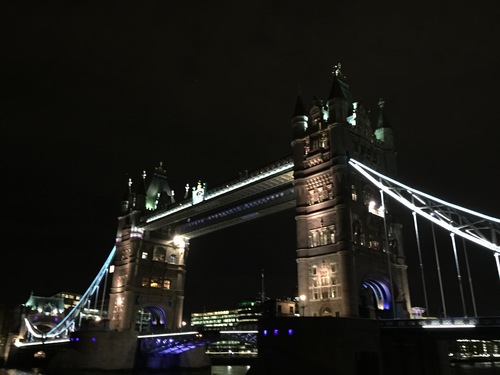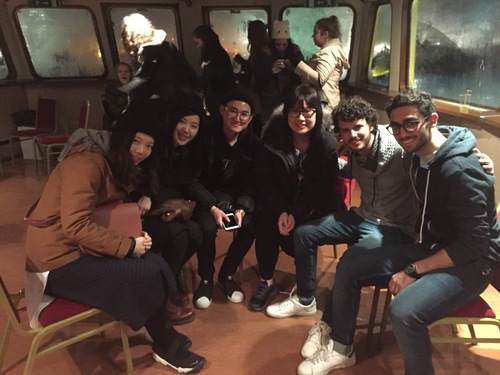-
Par alexcohen13 le 3 Février 2016 à 01:09
Hi there !
It has been 3 weeks since I arrived in London, 2 weeks since classes have started at Westminster University.
Therefore it is time for me to publish my first article, an article about the University profile. For my part the time of getting used to this new university, its facilities, the courses and pretty much all that is different from my home university is over. Time has come to share what I saw, heard and learnt these past 3 weeks.
The structure of this article will be simple yet helpful.
- Location of facilities
- History of Westminster University
- The integration
- My modules
- The cultural differences in class
I hope you will enjoy this first article and that it might be helpful for some of you, enjoy the reading !
I. Location of facilities
The University of Westminster has many campuses, actually it is located all over London. All locations are in central London except for one, Harrow campus.
Cavendish campus: Located in the heart of London, it is the home of the Faculty of Science and Technology.
Little Litchfield street: Part of the regent campus, the Westminster Law School resides at Little Litchfield street.
Harrow campus: Westminster School of Media, Arts and Design occupies the Harrow campus.
Marylebone campus: Recently refurbished the Marylebone campus is the home of the Faculty of Architecture and the Built Environment and the Westminster Business School.
Regent campus: The original home of The Polytechnic, it is now occupied by the Faculty of Social Sciences and Humanities.
This is a part of London, central London exactly, this map allows you to see where the different campuses (except Harrow campus) are located. The blue dot under regents park is where I live, in the dorms of the Marylebone campus.
II. History of Westminster University
Established in 1838 the University of Westminster was formerly known as the Polytechnic Institution (1838-1881). It changed its name to the Royal Polytechnic Institution in 1841 when King Albert (Queen Victoria's husband) became Patron.
In 2013 the University celebrated its 175th birthday.
The University of Westminster has a strong history, fore more almost two centuries it has been an indisputable institution not only in London or in the UK but worldwide. Threw the years it has been affected by joyful moments but also buy difficult times. It has been affected by the two World Wars and yet it has remained a strong figure of the international research.
III. The integration
I arrived on the 8th of January and 10 days before the beginning of the semester the "education abroad" team had already scheduled some integration activities for us.
For instance on the 11th of January a meeting was planned for every european students who was coming for the semester. It was a perfect way to meet other exchange students (mostly germans).
Then on the 14th on January an integration party on a boat was planned for us. It was again another pleasant way to meet people.
This photo was taken on the boat, the monument on the picture is the Tower on London (the place where the jewels of the crown are said to remain)
This picture was also taken on the boat at the party with 4 Hong Kongese, 1 Mexican and myself.
IV. My modules
At Westminster University, each year a "Module Catalogue" is available. In this catalogue, are referenced all modules available for each semester and for each year of study. Four modules must be taken so as to be able to reach the goal of 60 credits. In the UK 60 credits are equivalent to 30 ECTS.
This being said I have chosen 4 modules each one worth 15 UK credits/7,5 ECTS.
One module of "Spanish", in order to keep practicing 2 foreign languages this semester. Two business related modules, a "Web development" module and a module called "Online Entertainment Management". For the "Web development" module, the aim is to give the students the necessary skills to call themselves Web designers at the end of the semester. For the "Online Entertainment Management" module, we analyse how/why we as mankind use the internet.
Last but not least, I have chosen a "Modern Art" course. In this course we visit galleries and exhibits located in London. It was important for me to study a course that was not available back in my home university and this course was the perfect one for this. I also wanted to take as much as the city would give me while I was there. In matter of fact London is a city full of History, full of art. This course was an opportunity for me to take more than business courses, one of its aim for me is to get open-mindedness.
V. The cultural differences in class
Classes in London are much different, and this is in fact for reasons. London is a city where you usually meet few British students. Native students are rare and the educational system in London is in some kind a reflection of the UK citizens. Known as the greatest colonial empire of all time, since the end of colonialism the United Kingdom has welcomed many of its past colonised people.
In class students are either exchange students, or British students originally from India, Pakistan, Asians , Africans, etc. Therefore classes are "international classes" where there is a lot of interaction between professors and students, between students and students.
The UK educational system does not seem less rigorous than the french one, however the students are a lot more autonomous. Sanctions are known by everyone, due dates are also known by everyone, then each student knows what he has to do and when he has to do it. A major part of the assessments have to be uploaded on a platform. Teachers don't mind if a student is late or leaves early it is part of the system to consider that attendance is more important for students themselves than for the teachers. The educational system in the UK advocates autonomy.
Being part of this melting pot is a real life experience as a student but also as a person.
 votre commentaire
votre commentaire Suivre le flux RSS des articles de cette rubrique
Suivre le flux RSS des articles de cette rubrique Suivre le flux RSS des commentaires de cette rubrique
Suivre le flux RSS des commentaires de cette rubrique






